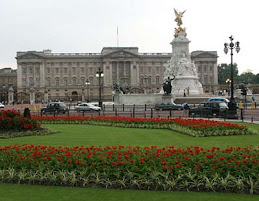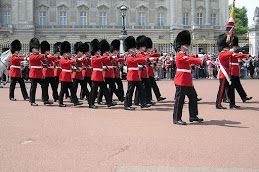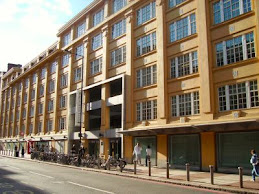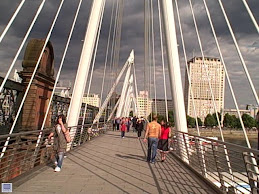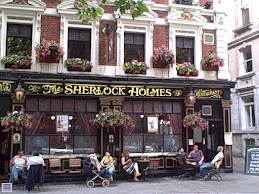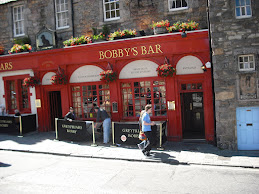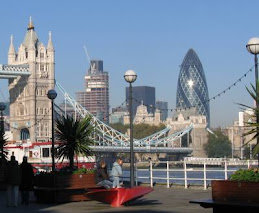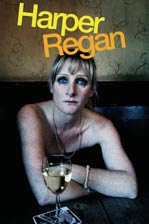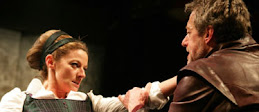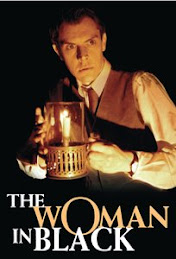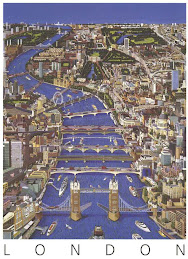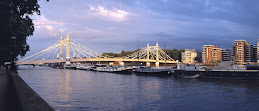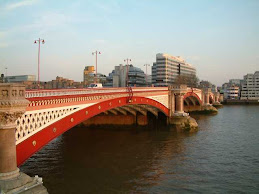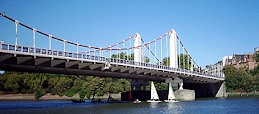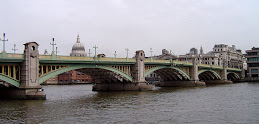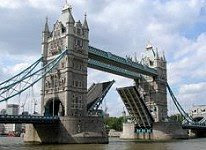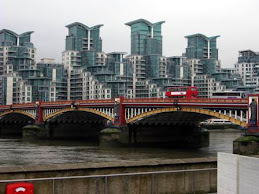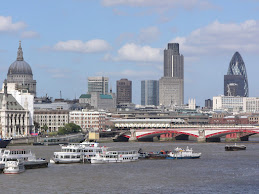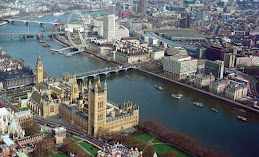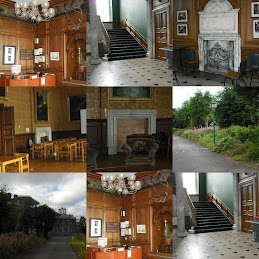A Boat Ride to Greenwich:
It was at a lovely morning to ride on the City Cruise down the River Thames from Central London to Greenwich on our way to the National Maritime Museum Library. With my iPod music to enjoy, I leaned over the side of the boat to absorb the wind in my face and the views of the city. There were many spectacular sights of buildings as we sailed ahead, such as a stream of high rise buildings, museums, churches, towers and other famous sites, some under construction and others standing in all of their glory and grandeur. Of special interest to me was the well known and debated construction, the Gherkin. I have learned that many locals have historically found this structure distasteful and quite an eye sore, most probably giving the building its nick-name from the Gherkin, a pickled cucumber, due to its odd shape. I have also read much earlier that this building may have been given its name for its phallic appearance. I find the building built by Sir Norman Foster in the main financial district of London quite striking, and can completely understand how it was voted the most admired new building in the world in 2006 in a survey by the world’s largest architect firms, according to my brother the Architect in New York city at the architectural firm Skidmore, Owens and Guidry. Other exciting structures to view from the cruise down the River Thames was Shakespeare’s Globe Theater, St. Paul’s Cathedral, the Tower of London and the London Bridge. My next walking tours will hopefully be the London Bridge and Jack the Ripper!!
To get back to business, we exited the boat and I was once again in Greenwich, having visited there once prior on my very first London Alive tour. It was just as I had left it one week ago, the beautiful London Borough of Greenwich revealing its wealth through interesting buildings, monuments and touristy sites as a product of its Royal connections. There are many famous sites here in Greenwich, such as the Queen’s house, originally a part of the Royal Palace of Palentia, as well as the Greenwich Park, the Old Royal Naval College, the Old Greenwich Royal Observatory which is the site of the prime meridian (0 degrees longitude), St. Alfeges Church and the Trafalgar Tavern as but just a few examples of structures of historical and architectural interest.
Through The Caird Library Reception to the Rotunda within:
Our initial tour guide was Hannah Dunmow, whom is the Archives and Manuscripts Manager of the Caird Library. The reference library that covers every aspect of maritime history imaginable was named after Sir James Caird, a very wealthy Scottish industrialist, entrepreneur, and philanthropist. He acquired the core of the collections at Caird Library and donated other monies to ensure its development. With the enormous wealth he acquired from his industriousness, a personal collection of historical artifacts, rare books, nautical instruments, globes, paintings, works of art and amazing ship models became a significant part of the museum and library collection.
In the travertine stone Rotunda, a marble bust of Sir James Caird was stationed in the direct center of the room in honor of him. This beautiful, small, and round rotunda made of one of my favorite stones is closed off from the library, but is an entry way/direct connect to it, aiming to have patrons reflect and respect the founder as one passes through. Now sitting in the library near the Registration Desk on bean bags, Hannah introduced the class to the library as the largest maritime museum in history with a core collection of:
•Navigation
•Piracy
•Astronomy
•Lists of shipping companies, agents and wrecks
•Horology
•The Royal and Merchant Navy List
•Heraldry (for searching for information about families and ships)
•Lloyd’s Registers (Captain Register)
*Microfilms
*Master’s Lists
•Lloyd’s Registry of Facts
•Annotated List of Warships
More about the Collections:
Many of these items are a part of the special collections found at this library, to include rare printed items, maps, charts and atlases dating back to 1430. The collection of manuscripts consist of papers and illustrated diaries, records, papers and logs as well as periodical files such as a few listed above (Lloyd’s, lists) offer value to an already very valuable collection that properly registered patrons may be able to access for research purposes. The Caird library offers research guides, collection websites, curators, library specialists and manuscripts staff to assist patrons in carrying out personal research. With a collection of over two million items, it is of value that trained library staff are available to help with all research needs. Of further value is the offer of an online collections database as an ongoing special library project that is expanding in access to provide more than 12,000 items.
For more specifics of the breakdown of the collection, there are approximately 100,00books, from 1850 on up (considered the modern books!) and over 20,000 pamphlets. Some of these are catalogued, yet most are not as the collection is too large and would be a cumbersome, laborious project! Of interest, Hannah let us know that close to 200 are considered current, all of course focusing on maritime history. Let me not forget to mention that the periodicals include many journals and magazines and the rare books were explained to range in date from 1474 to 1850. The “working collection” are those items from 1850 forward. Some of these items are not displayed, but securely stored for retrieval. Hannah stated that there are no special retrieval practices, other than that all staff retrieve items for registered patrons. They do ask for a two week notice for manuscripts and objects.
The Patrons, Registration, Patron Access and the Staff:
The patrons do not have to be an 'academic' to use the library. All that is needed to use the library is a visitation at the Registration/Reception Desk to get a Registration Ticket and show some identification. Once this is completed, patrons can enter the library. A comprehensive catalog is provided and accessible from the Registration room from a series of computers made available to provide Internet access. The museum object database is nicely adapted to fit into the archives and manuscript database. The manuscripts still in the catalog today are being separated out now to be included in this database. Presently, this is an ongoing project, as stated before.
For statistical purposes, our tour guide informed us that on average, between 3,000 to 4,000 patrons come into the library each year. There are up to 20,000 information requests at the reception/inquiries desk per year. Approximately 2,000 library items are retrieved and 5,000 manuscripts are retrieved. The items are stocked by professional librarians, archivists and library specialists. Everyone that is library staff is considered a library specialist or archivist. Each staff has time with the public and they rotate out time when dealing with the public. There are six full-time staff members to consist of three specialists, two technicians and one information specialist. In addition to that number, there is one head librarian.
Ancient Books: A special viewing by Rene and Mike
The special collections included old books that were spread out on a table in a Board Room for our viewing and handing with care. With two group discussions going on at the same time, the class was divided and completed in time for the board members and staff waiting outside to come into the room for a meeting. Renee Oir the Digital Services Librarian discussed the rare books for my first introduction to the rare book collection. She gave us insight into the essays found in a rare book in the special collections on navigation from 1748. The writings were of a period of instrument making during this time. It was of original binding and published by the Dutch, with a cover of Dutch Gilt or flowered papers. Items such as this one, were Dutch imported, confusingly originating from Germany or Italy. There was a religious motif on this item with flowering textures. It was spine labeled for preservation purposes so that the label itself was like a bookmark in that it marked the spot, identified the item, and did not stick to the book. This collection of essays concerned the improvement of navigation and of the many advances relating to instrument makers and instruments of this time period during a period of many transitions in navigation that dates back to the mid 18th century.
Of interest in this collection were also accounts of the Pirate William Kent. There was a transcript of what was said by this privateer from the year 1695 on up. He was hanged on the 23rd of May and left a hefty sum of money which was confiscated. This money was eventually left to help fund the school for girls in Greenwich around the corner from where this library is located.
Examples of other items of interest during this sample presentation of rare books in the Caird library collection was a rare ship bounty book owned by a surgeon dating back to 1779. A Sea Grammar book of John Smith was also reviewed to offer information from his lifetime experience and personal accounts as a guide for young sea-men on such things as how to build a ship, how to begin fighting, and how to throw men overboard for examples! This account really brings the literature and pirate movies to life as well as offers a historical account of colonization and religion from a man who was an advocate of it as well as publishing his seafaring experiences to make a living.
Mike Bevan, a librarian who works on the manuscript team, followed with the other half of the introduction of the rare book collections. The documents were found to be preserved by enclosure into sleeves with the documents divided by surname and alphabetized. We were shown another selection of rare books, with some on privacy issues relating to the spying that took place on the Spanish Armada! In this particular item, information was relayed of specific places and people.
The tour ended with ample time given to tour the museum independently. There were many items relating to navigation to include one of the world’s finest collections of 3,200 fantastic ship models that were owned by the wealthy Sir John Caird with many images/photographs, films, charts, maps and navigational instruments that offer historical items relating to navigation, seafaring and time measurement. Of additional value are the digital archival collections, consisting of over 9,000 objects and 20,000 images that are searchable in a database alphabetically by type.
What I found to be very helpful about this library is the fact one can use the library to conduct research by accessing a variety of research guides related to maritime. I am particularly interested in the historical accounts of the events surrounding the Titanic and after reading the physical displays and the library website digital guides, I found some interesting statistical facts about the ship itself such as the passenger crew, number of lifeboats and tonnage for examples and a timeline of significant dates. I learned that the 2,228 people boarded the Titanic when the vessel left Queenstown and that there were losses of 1,523 passengers and 688 crew members. Of help for patrons in need of more research on the subject from the collection or principle records maintained by the special collection for tracing family histories or in depth research, the National Maritime Reference Library offers a full range of maritime historical materials to preview.
Bold, J., Bradbeer, C., & van der Merwe , P. (2002). Maritime Greenwich a world heritage site: the Official guide. Greenwich: English Heritage.
Helpful Websites:
Caird Library
Greenwich
Royal Observatory
